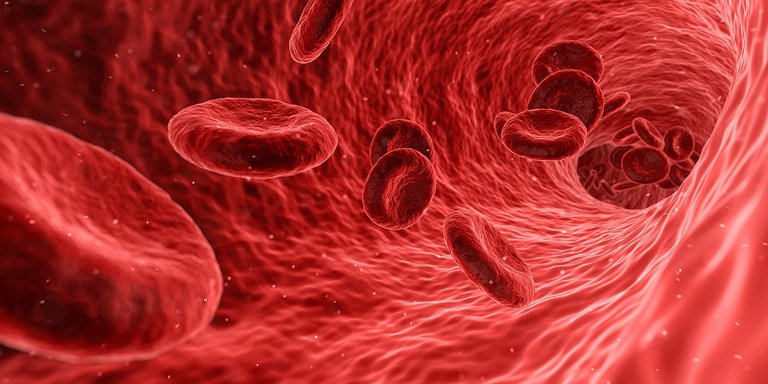Blood plays a very important role in the overall functions of the body. One of the specific functions is that it helps transport important materials around the body and helps get rid of wastes accordingly. Oxygenated blood from the lung moves to the heart where it is pumped through the aorta to arteries, arterioles until it gets to the cells, tissues, or organs that require oxygen. In return, those that need to get rid of carbon dioxide will release it into the blood as necessary.
When the blood level in an individual becomes low, it becomes a threat to the health or even the life of such an individual. A too high blood level may also be an indication of more serious health conditions.
One of the variables that serve as an indicator of the level of blood in humans is the number of red blood cells per unit sample of blood. It is often known as the pack cell volume in medical terms. It is a variable that shows the percentage of red blood cells in the blood. For the adult male, the normal pack cell volume ranges between 38.3 and 48.6 while that of females ranges from 35.5 to 44.9. Females tend to have lower pack cell volumes due to a number of factors, prominent among them being the loss of blood due to monthly menstruation.
These setpoints vary for those that are below the age of 18 depending on a number of factors. Also, pregnant women may have a lower range as a result of changes to their metabolism due to the pregnancy. Beyond these setpoints, the normal functioning of the body system may become impaired.
Too little pack cell volume means that cells and tissues might not be getting adequate oxygen for their normal functioning. In the same vein, getting rid of carbon dioxide also becomes impaired. When this happens, multiple organ failures may result.
Higher than normal pack cell volume may also be dangerous for the body's functioning. Too many red blood cells result in the thickening of the blood and this, in turn, impairs the free flow of blood in the body. Thus, obstructions in the blood vessels may occur as a result of blood clotting and this may result in more complex health issues.
When the blood level of a person drops below the normal range, a condition known as anemia, the first thing would be to check the underlining issue that could have been the cause of the drop. This is quite important because bringing the blood level back to normal by relevant means without tackling the underlining cause of the drop would be like fetching water inside a basket. Some of the symptoms elicited by low blood include dizziness, blurry vision, occasional fainting, and so on.
Once the underlining issue has been hacked, it is either tackled before bringing the blood level back to normal a concurrent approach can be taken by tackling the underlining cause and bringing the blood back to normal at the same time.
The approach to bring the blood level back to normal would depend on how far the blood level is from normal. If the level is not too far from the setpoint, blood boosters may be recommended to naturally return the blood level back to the setpoint. If the magnitude from the setpoint is huge, a blood transfusion may be recommended. In some cases, just tackling the underlining cause of loss of blood may be enough to bring the blood level back in a matter of days.

Having too much blood in the body is a different ball game entirely and a medical condition known as polycythemia vera. The condition occurs when the bone marrow responsible for the formation of red blood cells goes rogue and produces blood cells uncontrollably. One of the most common symptoms elicited by too much blood in the body is headaches. Other symptoms include dizziness, fatigue, etc.
People with too much blood in their bodies would medically be advised to be drinking a lot of water and extreme cases are recommended for frequent blood donation. Staying well hydrated will prevent the thickening of the blood so that blockage of blood vessels due to clotting will not occur.
Donate blood to save lives
According to a particular statistics, one out of seven people that enter hospitals needs blood. Blood is not a substance that can be artificially synthesized or stored for a long period of time. Hence, a regular supply of blood can only be guaranteed if people who are eligible to donate actually make efforts to donate regularly.
Eligible blood donors need not worry about coming to any harm as a result of donating blood. Before donating, potential donors are tested to certify that they are actually fit to donate. Without any underlining cause to lose blood cells, once the blood cells fall below the physiological setpoint, the bone marrow is signaled to produce more blood cells and the setpoint is restored within a few days. In other words, donating blood has the potential to save lives and have no negative effects on donors.
If you have come thus far, I want to thank you for your time.
Posted with STEMGeeks
The rewards earned on this comment will go directly to the person sharing the post on Twitter as long as they are registered with @poshtoken. Sign up at https://hiveposh.com.
Thanks for your contribution to the STEMsocial community. Feel free to join us on discord to get to know the rest of us!
Please consider supporting our funding proposal, approving our witness (@stem.witness) or delegating to the @stemsocial account (for some ROI).
Please consider using the STEMsocial app app and including @stemsocial as a beneficiary to get a stronger support.